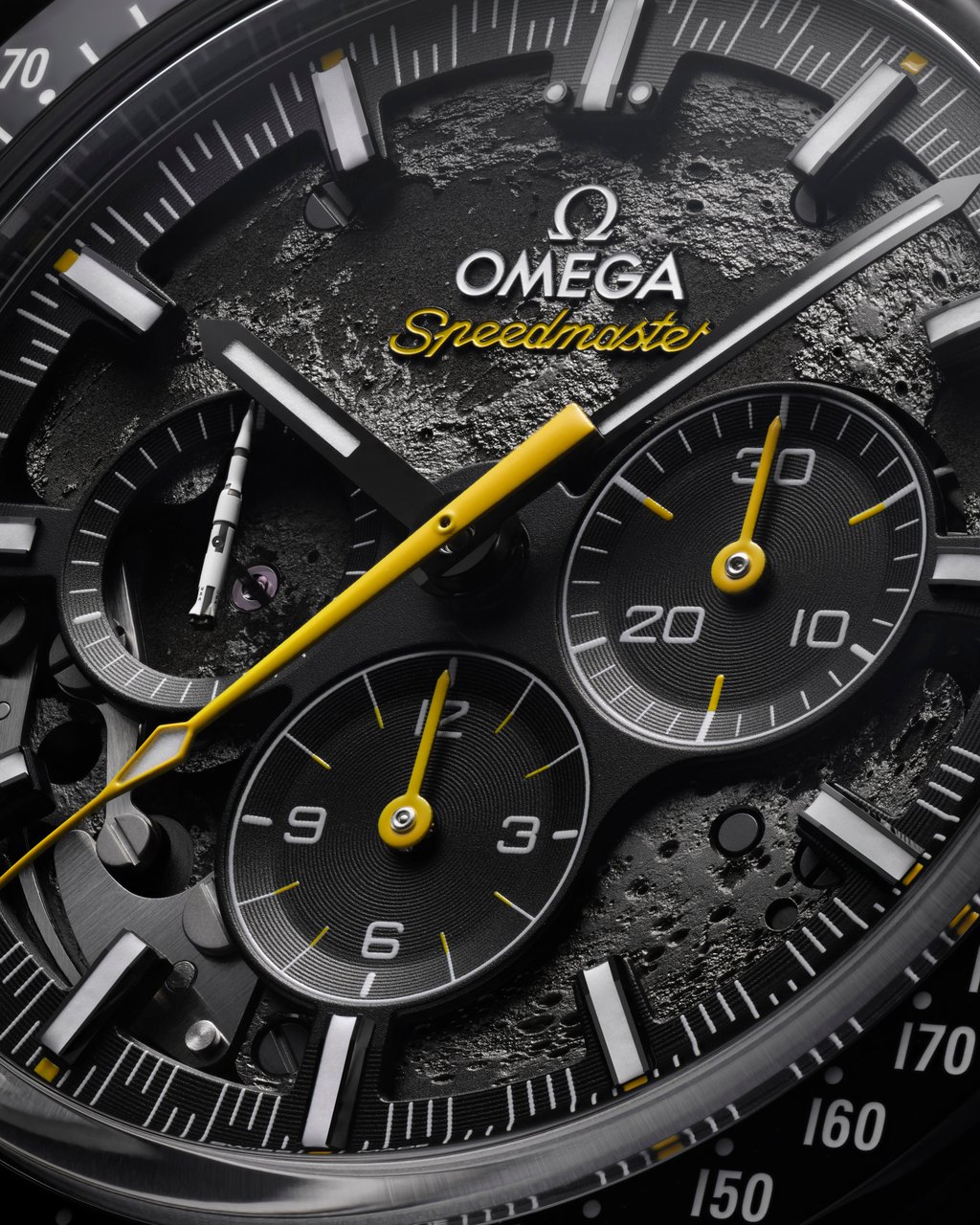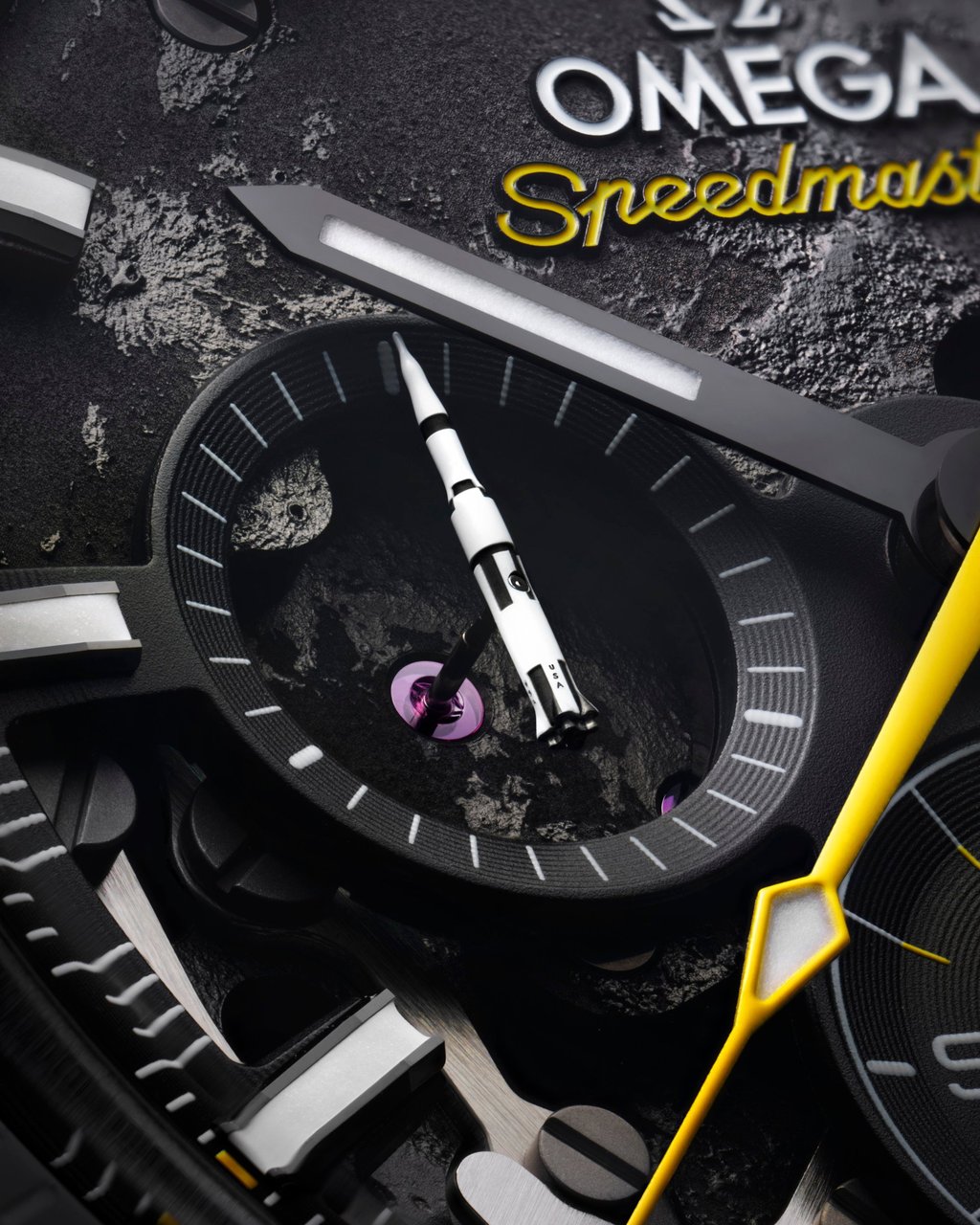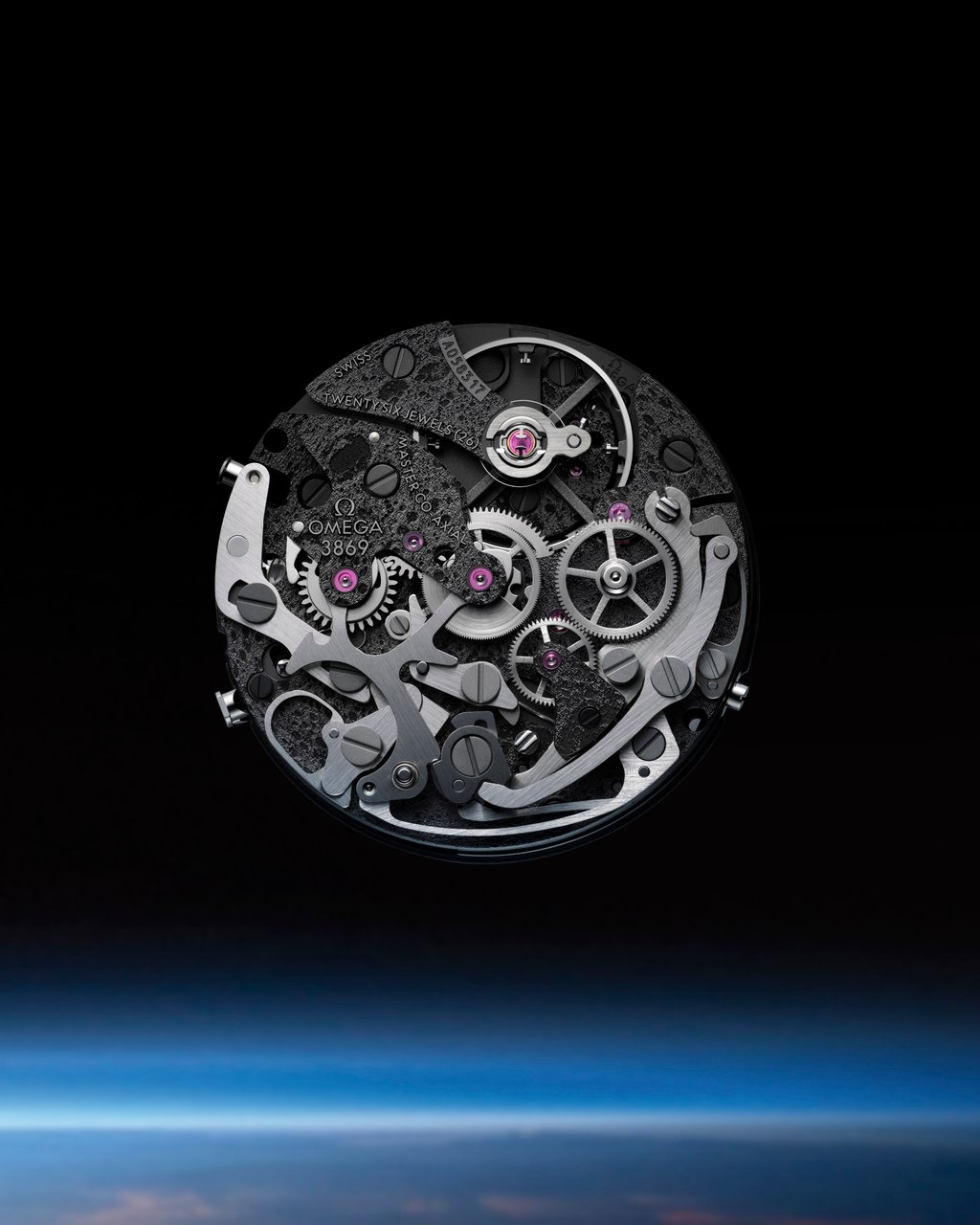Style Edit: Omega adds Speedmaster Dark Side of the Moon and Constellation Meteorite models to its galaxy of space-inspired watches dating back over the last 60 years

- A Speedmaster model first went into space in 1962 and one was worn on the moon by Apollo 11’s Buzz Aldrin – now, 2018’s Dark Side of the Moon has been relaunched with a new movement
- The dial of each Constellation Meteorite – there are 20 models across 4 sizes – is created from a slice of the 4.5 billion-year-old Muonionalusta meteorite
All watchmakers love to test their creations in the most challenging conditions, but none has had the opportunity to push their watches to the ultimate extremes quite like Omega has. That’s because the storied Swiss watchmaker enjoys a unique place in the history of space exploration, its timepieces having accompanied numerous astronauts on their journeys into the unknown.


After that, it travelled on all six manned moon missions, including the momentous Apollo 11 trip in July 1969, when astronaut Buzz Aldrin wore his on the lunar surface; and the notorious Apollo 13 the following year, when astronaut Jack Swigert’s Speedmaster was crucial in timing the burn that thankfully allowed the crew to return to Earth safely.

One of the most epoch-making of Omega’s jaunts beyond the stratosphere was the Apollo 8 mission of 1968, the first manned flight to orbit the moon. Naturally, the astronauts on board wore Speedmasters and in 2018, half a century on, their epic achievement was marked with a new Omega collection. The Speedmaster Dark Side of the Moon was a ceramic chronograph that recreated the moon’s surface, visible through its openworked dial.

Now, for 2024, the Dark Side of the Moon has been equipped with a new movement and subtly updated throughout. The new Calibre 3869, certified as a Coaxial Master Chronometer, showcases the moon in dramatic relief on its main plate and bridges. Offering improved definition over the earlier model, it again recreates both sides of the moon: the usual view from Earth on the dial side, and the mysterious dark side that the Apollo 8 astronauts saw on the back.